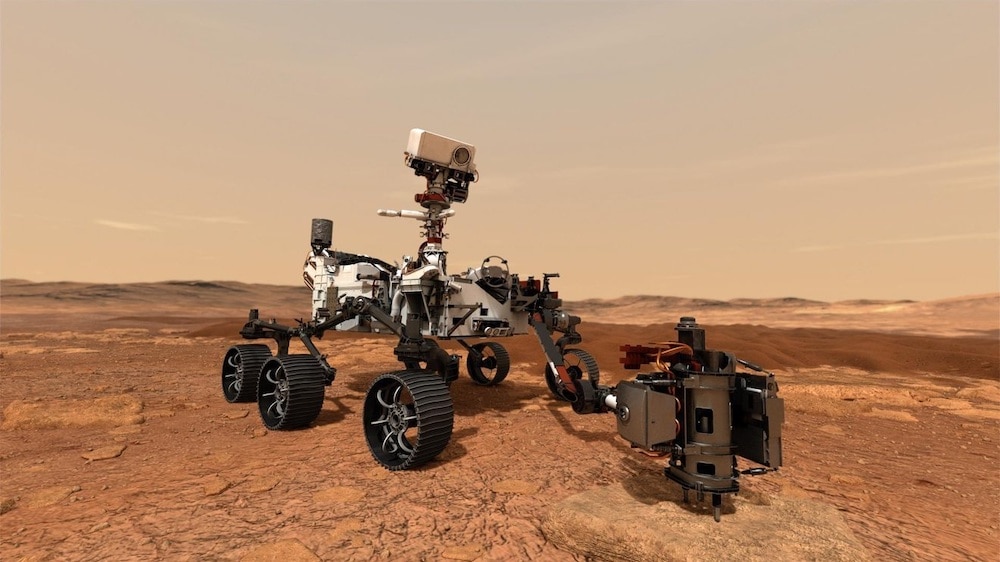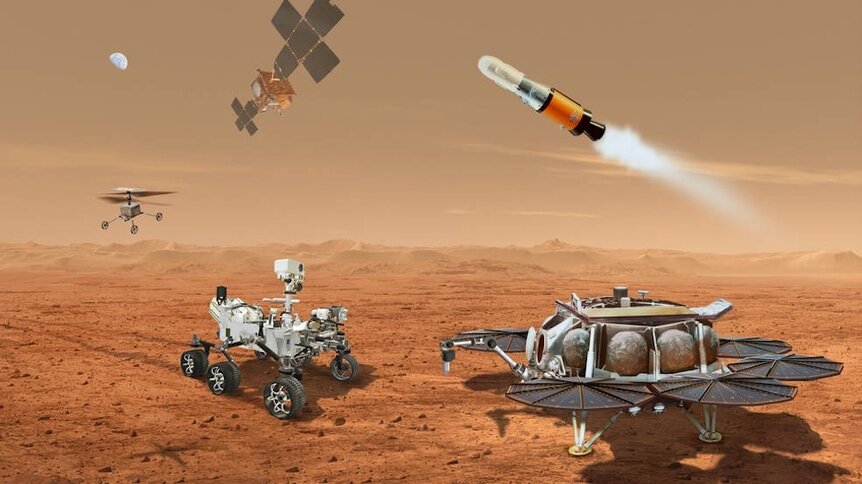Create a free profile to get unlimited access to exclusive videos, sweepstakes, and more!
Our Mars rocks are ready, now we just need to go get them
Order up!

In 1953’s It Came From Outer Space, an amateur astronomer is thrust into a cosmic adventure when he witnesses an alien spacecraft crash land nearby. It’s the sort of thing astronomers dream about, some weird and wonderful thing from beyond our world visits, however briefly, and we get to glimpse the universe’s secrets. Unfortunately, the universe isn’t in the habit of making friendly deliveries, so if we want something interesting from outer space, we might have to go get it ourselves.
When the Perseverance rover landed in February of 2021, it embarked upon an ambitious mission to study Mars’s past by gathering rock samples which could one day be returned to Earth. Percy won’t be bringing the rocks back to Earth itself. No, it will spend the rest of its days as a lonely robot on a vast desert planet. Instead, we’ll send another mission to link up with Perseverance, grab the rock samples, and bring them back home. At least, that’s the plan.
RELATED: Watch groundbreaking video from the Mars Perseverance landing!
Over the last year and a half, Perseverance has been painstakingly collecting rock samples form all over its travels and storing them in its gut. The plan is for Percy to keep collecting and keep storing, while it waits for a return mission in 2030. If all goes well between now and then, the rover will drive to the landing site, deliver a load of rock samples, and the craft will return to Earth. But that’s almost a decade away and a lot can happen on Mars in that much time. While NASA’s rovers are famous for living well beyond their planned mission timelines, there are no guarantees on Mars, and something could happen to the rover before it has a chance to rendezvous with the lander. That’s why there’s a backup plan.
That plan will be proposed at an upcoming Mars community workshop meeting. The idea is to have Percy drop 10 or 11 sample containers at the bottom of Jezero crater. If approved, the rover will start dropping rock samples as early as November of this year, leaving a stash behind for a future return mission to pick up. Those samples will be ready and waiting, no matter what happens to the rover afterward. If something were to happen, even while the return mission were in flight, instructions could be sent to land at the secondary site inside Jezero instead.
Getting a curated sample box of Mars rocks back to Earth could provide all sorts of information not just about Mars’ past geology, but also about any potential biology. Despite all coming from a relatively confined area of the planet, scientists have been able to gather a diverse collection of rocks so far, including some volcanic rock which might have been amenable to life. Porous rocks interacting with water are perfect for the sorts of chemical reactions we expect to be present when life emerges.
Soon, scientists will send the rover to sample Enchanted Lake as well as gather some wind-deposited soils which should give a general picture of sediments blown in from all over the planet. If we’re going to expend the time and energy to pick up some rocks from another planet, we want to make sure we get as much of the set as possible in one go.
Assuming the plan is approved, the deployment process won’t be quick. Perseverance won’t simply dump its contents and move on. Instead, it will spend about two months carefully placing individual sample containers a few meters apart on a flat part of the crater. That will give the return mission a clear map of where they are and how to pick them up. The pickup plan has changed recently as well, as we learn more about how to operate on the red planet.
In lieu of a recovery drone, as was originally proposed, we’re likely to get a set of helicopters doing the actual sample delivery. After the success of the ingenuity helicopter, having flown dozens of flights and living longer than anticipated, a new plan was hatched to send out a pair of helicopters to locate, retrieve, and return the sample containers to the lander.
If Perseverance does its job right, scientists should know where the containers are to within centimeters. Of course, if all goes well, Perseverance will deliver a larger sample to the lander when it arrives in 2030 and the backup plan will remain in place, a simple geometric reminder of what a few billion humans and a robot can do together.



























